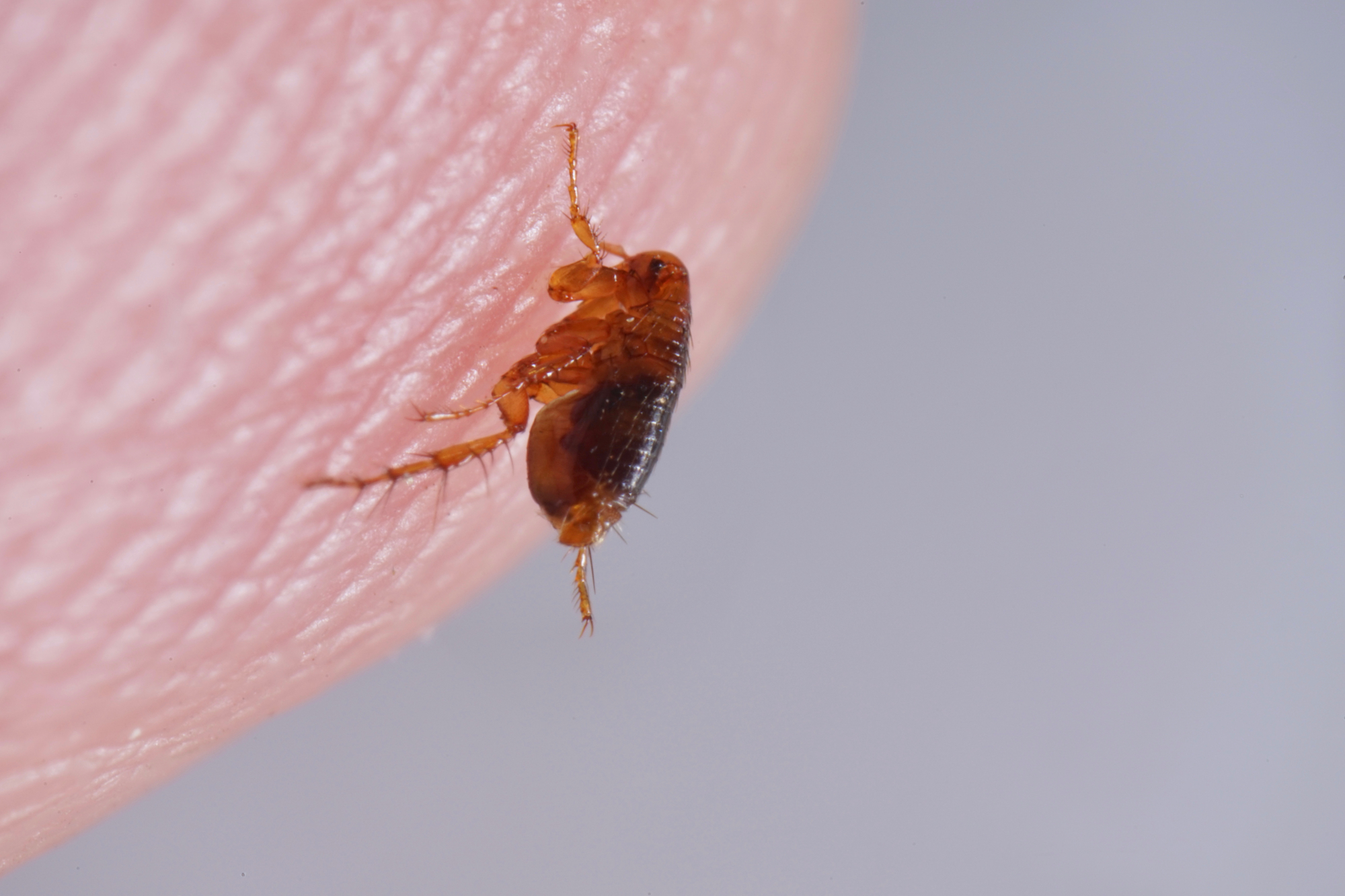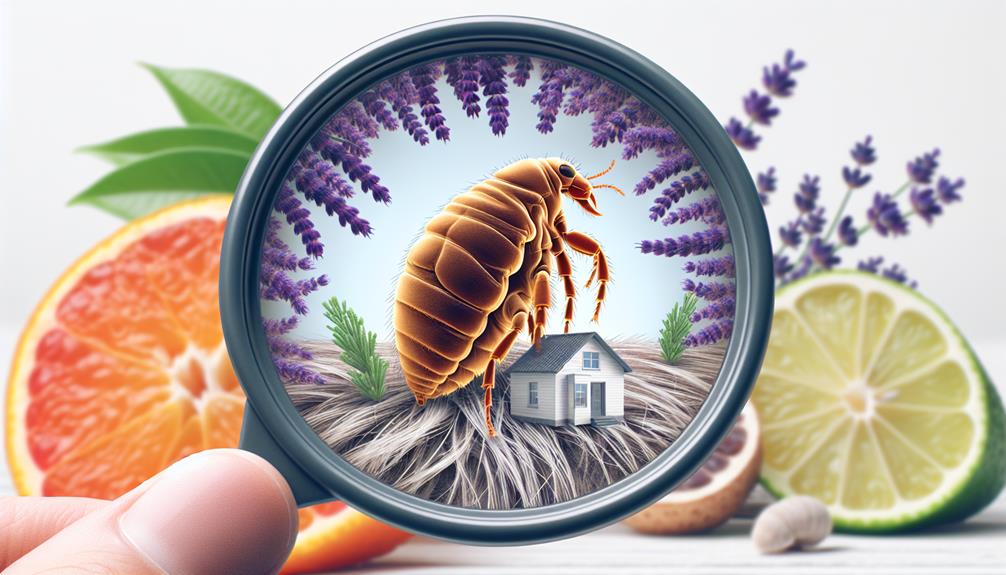Like a stealthy army waiting for the perfect moment to strike, fleas can invade your home with little warning, turning peace into chaos. You’ve likely heard the horror stories or, worse, lived through your battle with these persistent pests.
Dealing with them requires more than just a quick fix; it demands a strategic approach, akin to planning a well-coordinated attack. In this discussion, you’ll uncover the lifecycle of fleas, identify the telltale signs of an infestation, and explore the arsenal of treatments at your disposal.
From natural remedies to preventive measures and beyond, we’ll guide you through cleaning strategies for your home and protecting your pets, all while keeping these invaders at bay. You’ll also learn outdoor control tips and the importance of regular monitoring and maintenance.
So, if you’re ready to claim victory and ensure your home remains a flea-free fortress, let’s prepare you for the fight ahead.
Key Takeaways
- Understanding the flea life cycle and how temperature affects it is crucial in managing flea infestations.
- Choosing the right treatments involves considering the lifecycle and resistance patterns of fleas, as well as balancing affordability and effectiveness.
- Natural remedies can provide safe alternatives to chemical treatments, such as dietary supplements and herbal baths.
- Implementing comprehensive cleaning strategies and regular pet grooming are essential in preventing and controlling flea outbreaks.
Understanding Flea Life Cycles
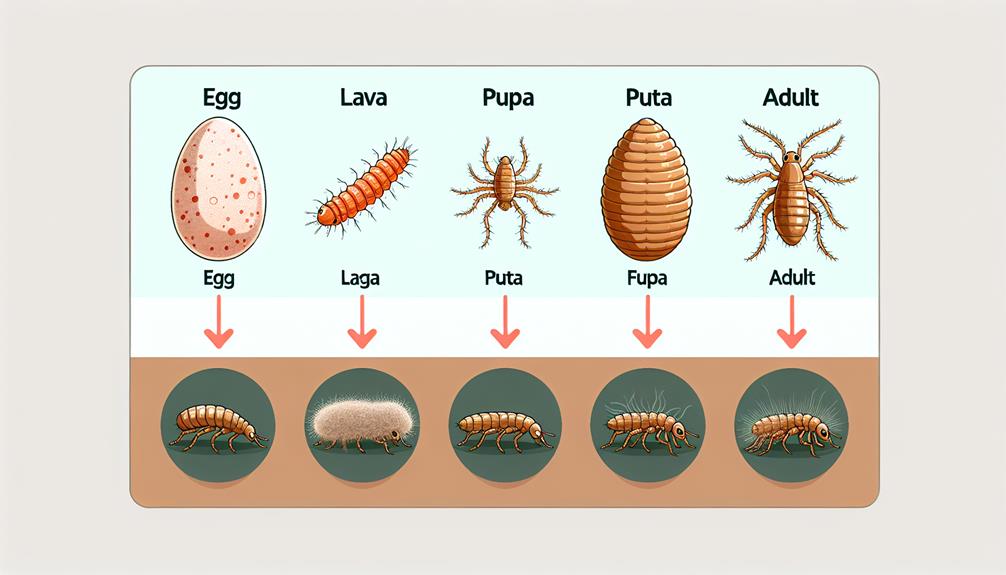
To effectively combat flea infestations, it’s crucial to understand their complex life cycle, which includes the egg, larva, pupa, and adult stages. You’re not just dealing with the pests you see; you’re up against an entire system that’s influenced heavily by temperature impacts and the flea diet.
Let’s delve deeper. Temperature significantly affects the duration of the flea life cycle. In warmer conditions, fleas can develop from egg to adult in just two weeks, whereas cooler temperatures can extend this process to several months. This is why you’ll often find flea populations booming during warm seasons. To stay ahead, monitor your environment’s temperature closely, adjusting your control strategies as needed.
The flea diet is another critical aspect. Flea larvae feed on organic matter found in their surroundings, primarily consuming the faeces of adult fleas, which contain undigested blood. This dietary requirement means that without a host, the cycle can’t continue. It’s a stark reminder that managing flea populations isn’t just about elimination; it’s about disrupting their lifecycle and making your home inhospitable to these parasites.
Identifying Infestation Signs
Recognizing the signs of a flea infestation requires vigilant observation, as these pests can quickly overrun your living space if not promptly addressed. Initially, you’ll notice the distressing signs in your pets; excessive scratching, licking, or biting at their skin are clear indicators. However, fleas don’t limit their presence to animal hosts. You might find flea dirt, which resembles black pepper, scattered on bedding, carpets, or furniture. This is flea faeces, and it’s a telltale sign of their presence.
Seasonal patterns significantly influence flea activity, with warmer months typically seeing a surge in populations. This uptick isn’t just a discomfort but can have severe infestation consequences. Fleas can transmit diseases and cause allergic reactions in both pets and humans, making early detection and control crucial.
Flea bites on human skin, often appearing as small, red, itchy spots, can sometimes be the first indication of an infestation in your home. Paying attention to these signs, especially during peak seasons, can help you protect your living environment from these unwanted invaders.
Choosing the Right Treatments
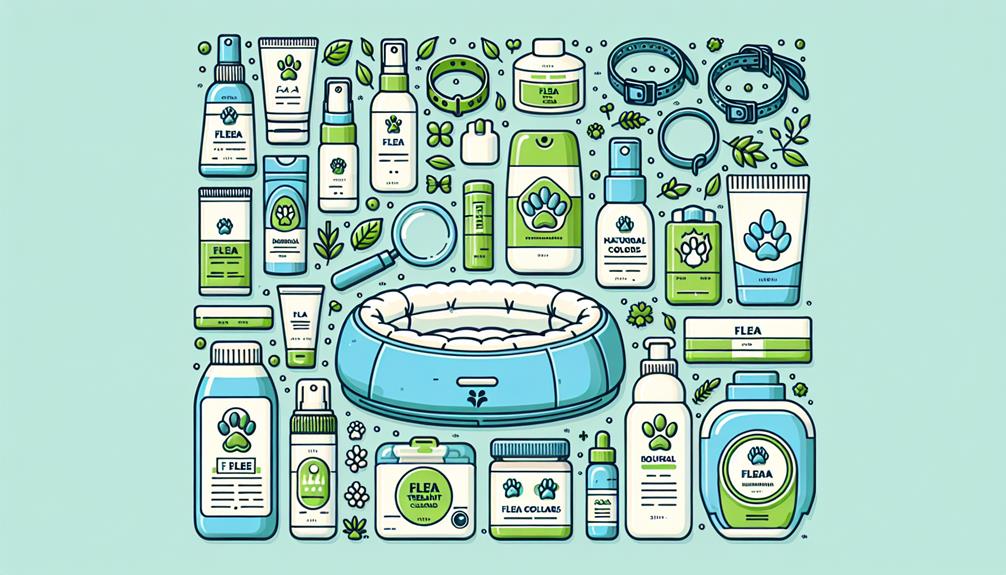
Selecting the most effective flea treatment requires understanding the lifecycle and resistance patterns of these pests to ensure the chosen method addresses all stages of infestation. You’re not alone in this fight; countless others are navigating the same challenges, seeking solutions that are both efficient and cost-effective. By delving into the scientific nuances of flea control, you’re joining a community committed to safeguarding their environments.
When considering treatment costs, it’s pivotal to balance affordability with effectiveness. Cheaper options might seem attractive but could prove less efficient, necessitating repeated applications and, consequently, greater expense over time. Conversely, investing in higher-quality treatments may offer more comprehensive, lasting control, reducing the long-term financial burden.
Application methods vary widely, from topical solutions and oral medications to environmental sprays and powders. Each has its place within a strategic plan against fleas. Topical and oral treatments target the fleas on your pets, breaking the lifecycle at its source, while environmental applications address the larvae and eggs hidden within your home. Integrating these methods, tailored to your specific situation, maximizes impact, offering not just a solution, but a community of support in your quest for a flea-free environment.
Natural Remedies and Prevention
In the realm of flea prevention, natural remedies offer a safe and environmentally friendly alternative to chemical treatments, leveraging the power of plant-based compounds and traditional methods to combat these persistent pests. As part of a community committed to holistic pet care, you’re likely seeking methods that align with these values.
Dietary supplements, such as those rich in omega-3 fatty acids, can bolster your pet’s skin health, making it less inviting to fleas. Similarly, adding a small amount of garlic to your pet’s diet, within safe limits, has been suggested to repel these pests, although it’s crucial to consult with a veterinarian first to avoid any potential toxicity.
Herbal baths offer another layer of defence in this ongoing battle. Ingredients like rosemary, lavender, and peppermint not only possess natural flea-repelling properties but also promote a sense of well-being and community among health-conscious pet owners.
Cleaning Strategies for Homes

To effectively combat flea infestations in your home, it’s essential to adopt a comprehensive cleaning strategy that addresses both the environment and the pest’s lifecycle.
Vacuuming plays a pivotal role in this strategy. Not all vacuum types are created equal; a vacuum with strong suction and a HEPA filter is most effective at removing fleas, eggs, and larvae from carpets, upholstery, and cracks in the floor. It’s crucial to vacuum daily in infested areas and promptly dispose of the vacuum bag or empty the canister outside to prevent re-infestation.
Laundry solutions also form a critical component of your cleaning strategy. Washing your pet’s bedding, along with any affected household bedding, curtains, and throw rugs, in hot water followed by a high-heat dry cycle, kills fleas at all stages of their lifecycle. This approach ensures that you’re not just removing the pests but also preventing their future growth and spread.
Protecting Your Pets
Nearly all pets are at risk of flea infestations, necessitating proactive measures to safeguard their health and well-being. As part of a comprehensive approach to flea pest control, it’s crucial to incorporate regular pet grooming and consider diet adjustments.
Pet grooming plays a pivotal role in detecting and preventing flea outbreaks. Frequent brushing removes fleas, flea eggs, and dirt that could harbour these pests. Moreover, baths with flea-preventive shampoos can kill existing fleas and deter new ones from making your pet their host. It’s not just about keeping your pet clean; it’s about creating an environment that’s inhospitable to fleas.
Diet adjustments can also contribute significantly to your pet’s flea resistance. Certain dietary supplements bolster your pet’s skin health, making it less appealing to fleas. For instance, adding omega-3 fatty acids to your pet’s diet can improve skin barrier function, reducing the likelihood of flea infestations.
Outdoor Flea Control Tips
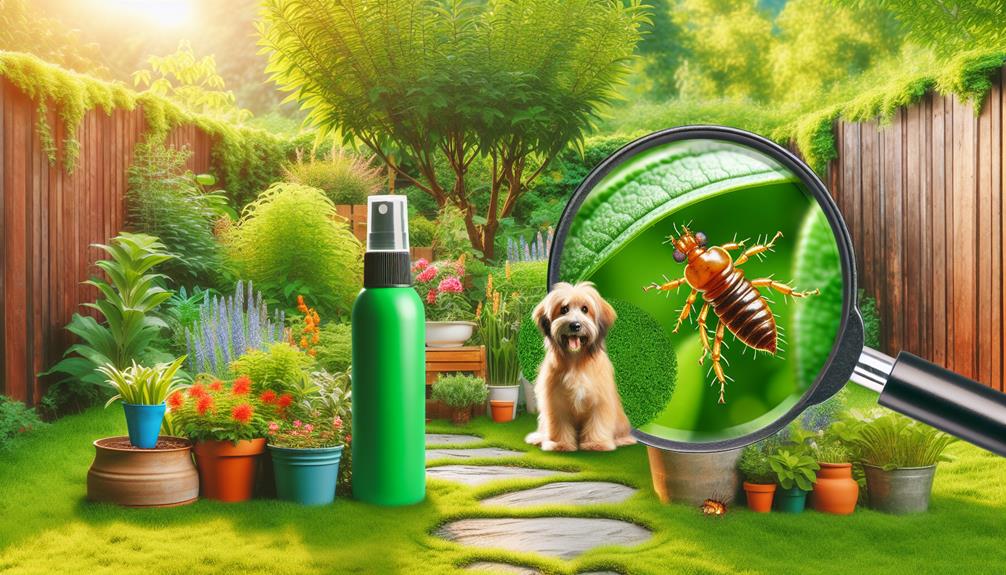
Addressing the challenge of outdoor flea control demands a multifaceted strategy that starts with understanding the environmental conditions conducive to flea proliferation. You’re part of a community that values not just the wellbeing of your pets, but also the health of your outdoor spaces.
Weather considerations play a pivotal role in flea activity; fleas thrive in warm, humid conditions. Monitoring and adjusting for these conditions can significantly reduce their numbers. During peak flea seasons, you must stay vigilant, using weather forecasts as a guide to preemptively manage your outdoor areas.
Landscaping adjustments can further fortify your defence against fleas. Tall grass and debris provide fleas with shelter and a breeding ground. Regularly mowing your lawn, trimming bushes, and removing debris disrupts their habitat. Incorporating plants that repel fleas, such as lavender and mint, into your garden not only enhances its aesthetics but also acts as a natural deterrent.
Monitoring and Maintenance
Effective flea control requires consistent monitoring and maintenance of your outdoor spaces to detect and mitigate infestations early. Understanding the climate impact on flea populations is crucial, as warmer temperatures can accelerate their life cycle, leading to rapid increases in their numbers.
Regularly check your pets, as they’re often the first indicators of a flea problem. Look for signs of scratching, red skin, or flea dirt in their fur.
Implementing a routine inspection schedule for your garden and outdoor areas is also vital. Pay special attention to shaded, moist spots where fleas are most likely to thrive. Removing debris and keeping grass trimmed can significantly reduce flea habitats.
Don’t underestimate the importance of professional consultation, especially if you’re dealing with persistent infestations. Experts can offer tailored advice and advanced treatment options that are more effective than over-the-counter solutions. They can also provide insights into preventive measures, taking into account the specific climate challenges of your area.
You may also enjoy reading this article
Was This Article Helpful?
- Please provide feedback and comments to help us improve our content.
- Share your experiences and any additional tips you have for dealing with pests.
Share this Post

